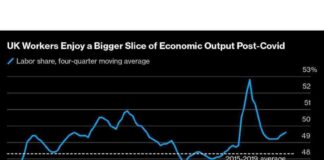CPI Impact on the Menu – Insightful Perspectives for Forex Traders
In today’s economic landscape, the release of Consumer Price Index (CPI) numbers holds significant weight for forex traders around the world. The CPI data from the US, UK, and Sweden provide valuable insights into the inflationary pressures affecting these economies and can influence trading decisions in the foreign exchange markets. Let’s delve into the latest CPI figures and their implications for forex trading.
US CPI Figures and FOMC Meeting
The US is set to release both headline and core CPI numbers, with expectations of a 0.2% month-on-month increase in seasonally adjusted data. These figures are crucial as they come just before the Federal Open Market Committee (FOMC) meeting in September. The Federal Reserve will closely monitor the CPI data as it assesses the state of inflation in the country. The release is scheduled for 14:30 CET and will likely impact forex trading decisions in the US dollar.
Swedish Inflation Data and Riksbank’s Policy
In Sweden, the July inflation data is expected to be below the Riksbank’s current forecast, as per the June Monetary Policy Report. Forecasts indicate CPIF at 1.4% year-on-year and CPIF excluding Energy at 2.0% year-on-year, which are lower than the Riksbank’s projections. The lower-than-expected inflation numbers put pressure on the Riksbank to continue cutting its policy rate. Today’s release will be crucial ahead of the upcoming meeting, where markets anticipate a rate cut. Forex traders will closely monitor the Swedish krona in response to the CPI data.
UK CPI Inflation and Market Expectations
In the UK, analysts anticipate headline CPI to come in at 2.3% year-on-year and core inflation at 3.4% year-on-year. The CPI figures will provide insights into the inflationary trends in the UK economy and could influence forex trading involving the British pound. Market participants will analyze the data to gauge the Bank of England’s future monetary policy decisions.
Japanese National Accounts and Growth Prospects
Overnight, Japan is set to release its second-quarter national accounts, shedding light on the country’s economic growth trajectory. Preliminary data suggests a potential rebound in growth following three weak quarters, although private spending remains a concern. Forex traders will closely monitor the Japanese yen’s performance in response to the economic data release.
Market Reactions and Implications
In recent market developments, US yields dropped, and equities gained following a dovish Producer Price Index (PPI) print. The Nasdaq led the rally, reflecting market optimism. Market pricing for the upcoming FOMC meeting has shifted, with a higher probability of a 50 basis point cut compared to a 25 basis point cut. The volatile market conditions, driven by recession fears, continue to impact trading decisions.
In New Zealand, the Reserve Bank cut its cash rate by 25 basis points, leading to a decline in the New Zealand dollar against the US dollar. The unexpected rate cut highlights the divergence in market expectations and official decisions, affecting forex trading dynamics. In Japan, Prime Minister Fumio Kishida’s announcement of stepping down adds a political dimension to economic uncertainties, impacting the Japanese yen’s performance.
Conclusion
As forex traders navigate the complexities of global economic data releases, the CPI figures from the US, UK, Sweden, and other countries play a crucial role in shaping trading strategies. The market reactions to inflation data, central bank decisions, and political developments underscore the interconnected nature of the forex market. By staying informed and analyzing the latest economic indicators, traders can make informed decisions and capitalize on opportunities in the dynamic world of foreign exchange trading.






















